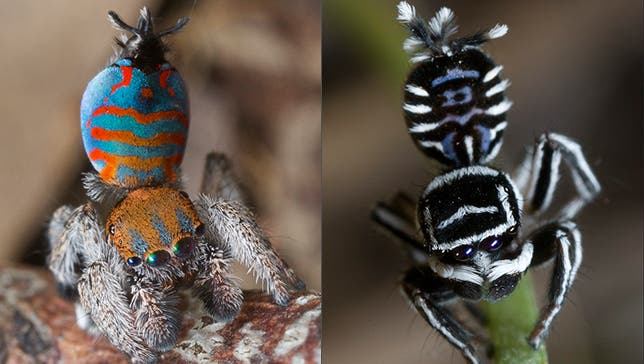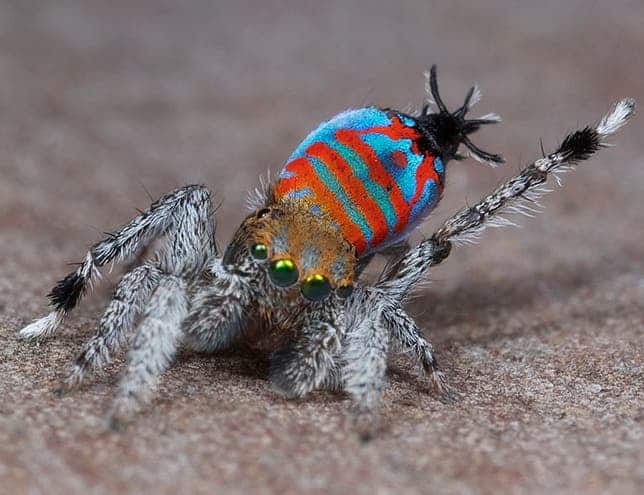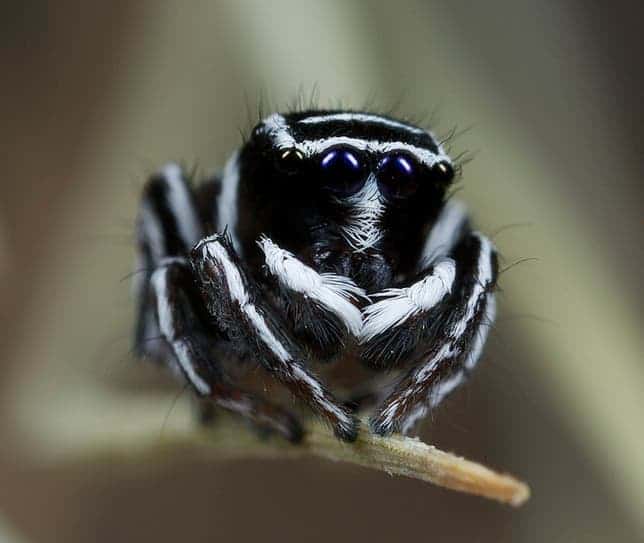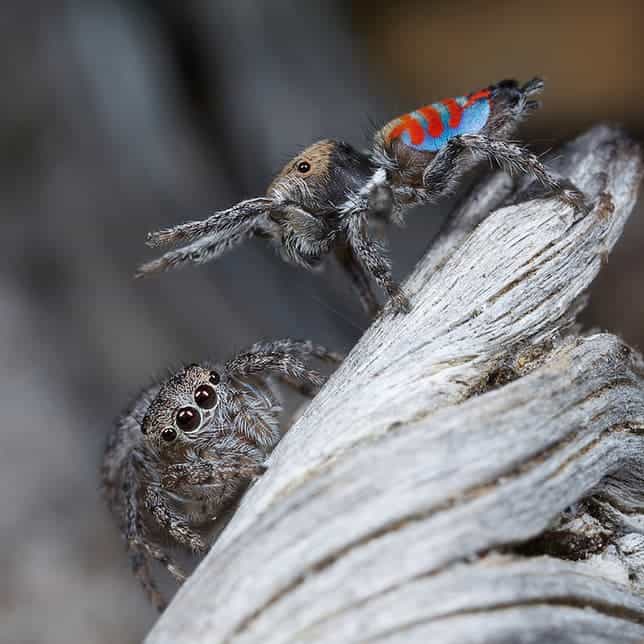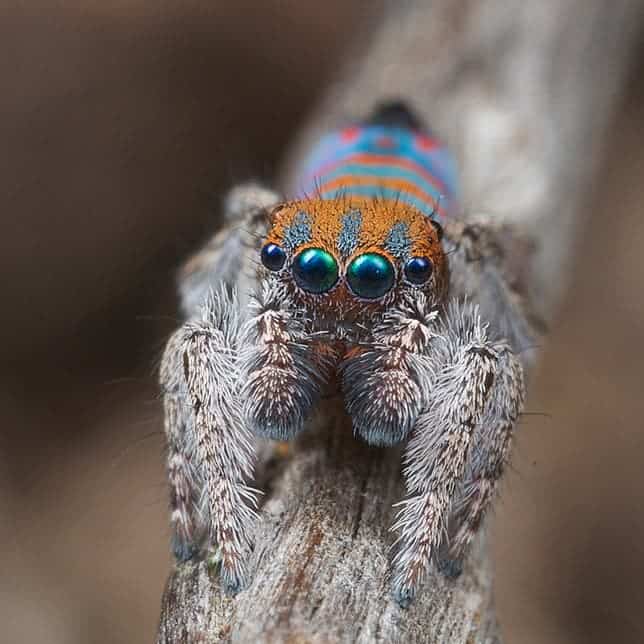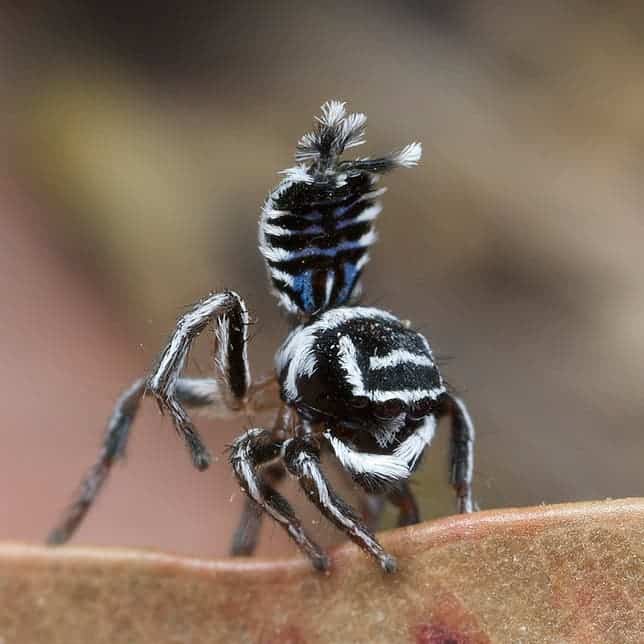It’s not every day that species get such awesome names – but then again, it’s not every day that such awesome spiders are discovered. Two gorgeous new species of spider have been discovered in Australia (where else?), and the researchers who made the discovery decided to give them these memorable names.
The species are a part of the jumping spider family, belonging to the peacock spider genus. They’re called peacock spiders not only because they are so brightly colored, but also due to their dancelike, courtship rituals. The two new species were found in southeast Queensland by Madeline Girard, a graduate student at the University of California, Berkeley and a friend who accompanied her in the field.
Girard affectionately nicknamed one of the spiders (Maratus jactatus) Sparklemuffin and the other one (Maratus sceletus) Skeletorus – it’s easy to understand why.
Sparklemuffin looks very similar to other known species of peacockspider, while Skeletorus, with its black-and-white coloring, looks entirely different from its genetic relatives.
“[Skeletorus] looks dramatically different [from] all other peacock spiders known to date, making me think that this group is perhaps much more diverse than we had thought,” said Jürgen Otto, an entomologist who specializes in photographing the arachnids and who co-authored the study. “Despite the large number of species we have discovered just in the last few years, I can’t help feeling that we may have just scratched the surface of this most exciting group of spiders, and that nature has quite a few more surprises in store,” Otto added.
Peacock spiders have been admired and cherished by biologists since they were discovered. Octavius Pickard-Cambridge, who is credited with the first formal biological description and hence is noted as the person assigning it its binomial name wrote in his first description that “it is difficult to describe adequately the great beauty of the colouring of this spider”.
Sparklemuffin is quite similar to other, previously discovered species, but this didn’t stop it from charming researchers.
“It was in particular its docile nature and soft teddy bearlike appearance that really charmed me,” he said. “It was a fun spider to work with.”
But they were even more excited to study Skeletorus – a spider unlike anything that’s been reported in biological studies. Needless to say, this goth guy is named after his black and white coloring; the species is actually making biologists think there may be more to peacock spiders than previously believed.
“[Maratus sceletus] looks dramatically different than all other peacock spiders known to date, making me think that this group is perhaps much more diverse than we had thought. Despite the large number of species we have discovered just in the last few years, I can’t help feeling that we may have just scratched the surface of this most exciting group of spiders, and that nature has quite a few more surprises in store.”
The team was actually able to catch Skeletorus during its mating ritual.
“When [the male] got within a few centimeters of the female, he exploded into a firework of activity,” he told Live Science. “The spinnerets were extended and flicked around at an amazing speed, one of the legs was flexed like he wanted to show off his muscles, and he moved constantly from one side of the grass blade to the other.”
I guess it depends on your standards what you can call ‘cute’, but in terms of spiders, I think this is as cute as it gets.
